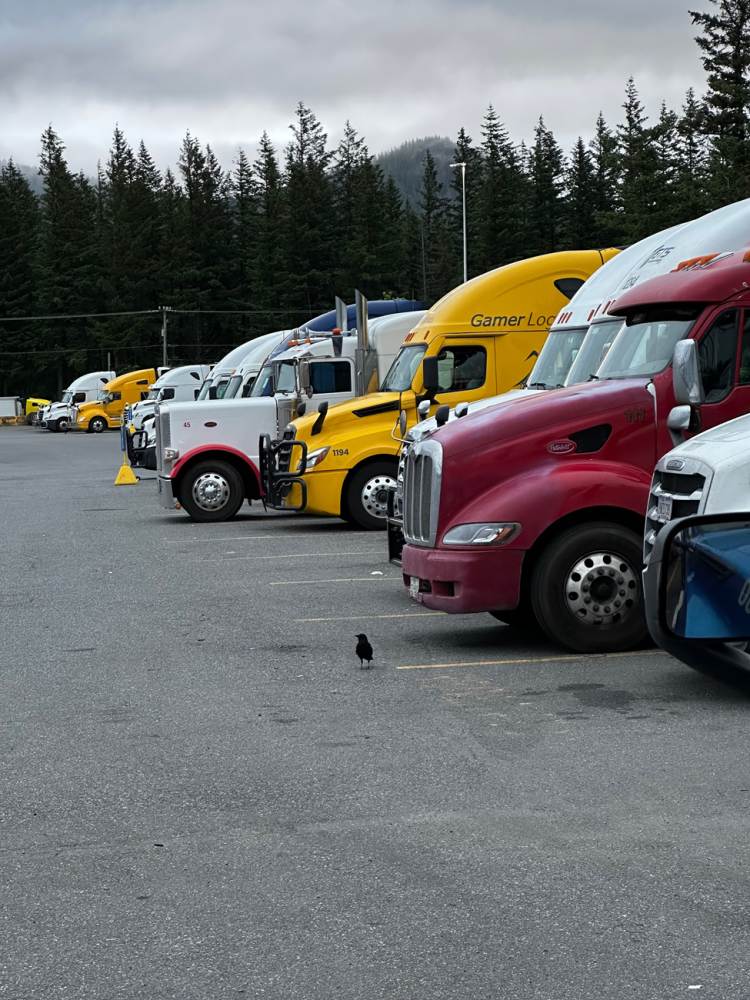By Brenda and Ivan Castillo
Like many, my wife and I started our birding journey as a way to spend more time outdoors. Our first exposure was a guided bird walk put on by Houston Audubon. It was very eye opening to have all that wildlife activity pointed out to us by the incredibly knowledgeable guides. It gave us a good foundation on how to explore our environment more closely. Ever since then, we’ve spent more time staring up at the trees than ever. We also have a unique privilege that enables us to bird and learn about nature all across the country.
My name is Ivan, and I am an over the road truck driver, and I travel the country transporting all sorts of material. For the past few months, my wife, Brenda, has joined me in my truck as we share some of the most beautiful views and moments the open road has to offer.
When we’re driving, we have a lot of choices in where we park, but some of our favorite spots to stop are US rest areas for their easy access, quiet spaces, and (surprising) wildlife viewing opportunities. Oftentimes when the state Department of Transportation is building these rest areas, they put a lot of care into designing the buildings and landscaping to put their best foot forward to travelers from all parts of the world. They include native plants, shaded picnic areas, and even fountains to create pockets of good habitat. They unintentionally build an oasis in an otherwise barren landscape for many animals. These off highway habitats attract tons of wildlife; we’ve seen everything ranging from giant insects to nesting birds, and even large predator tracks. Rest areas are teeming with wildlife activity that many people miss in their rush to use the restroom and get back on the road, but we take every opportunity we have to explore these mini-preserves.
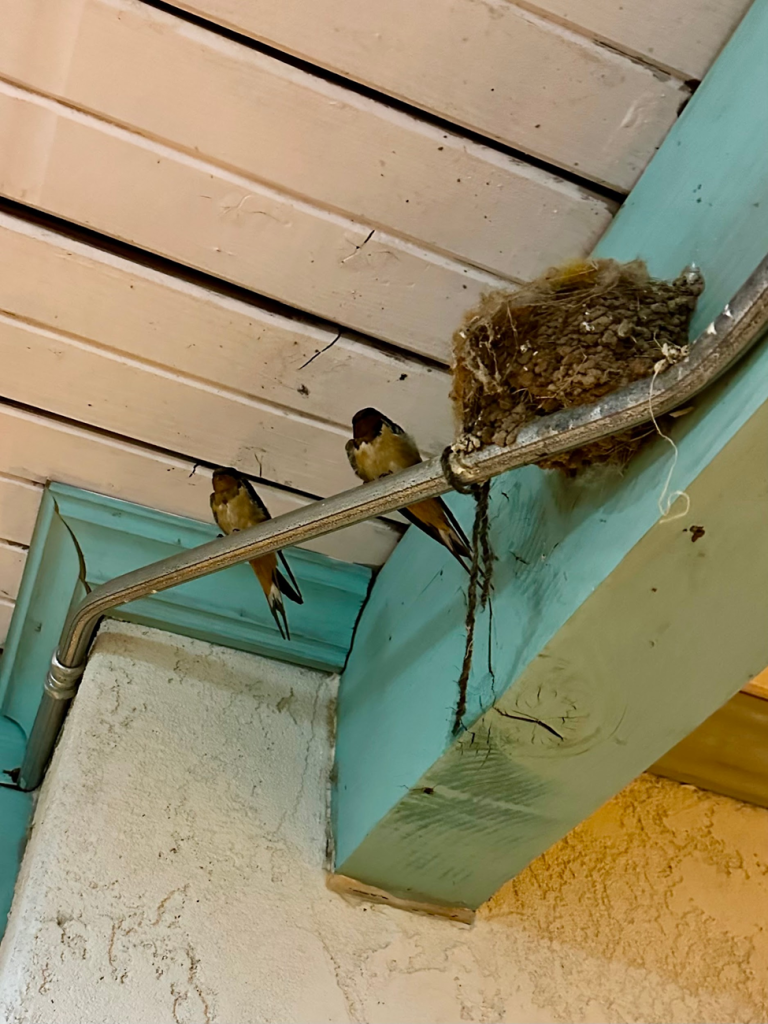
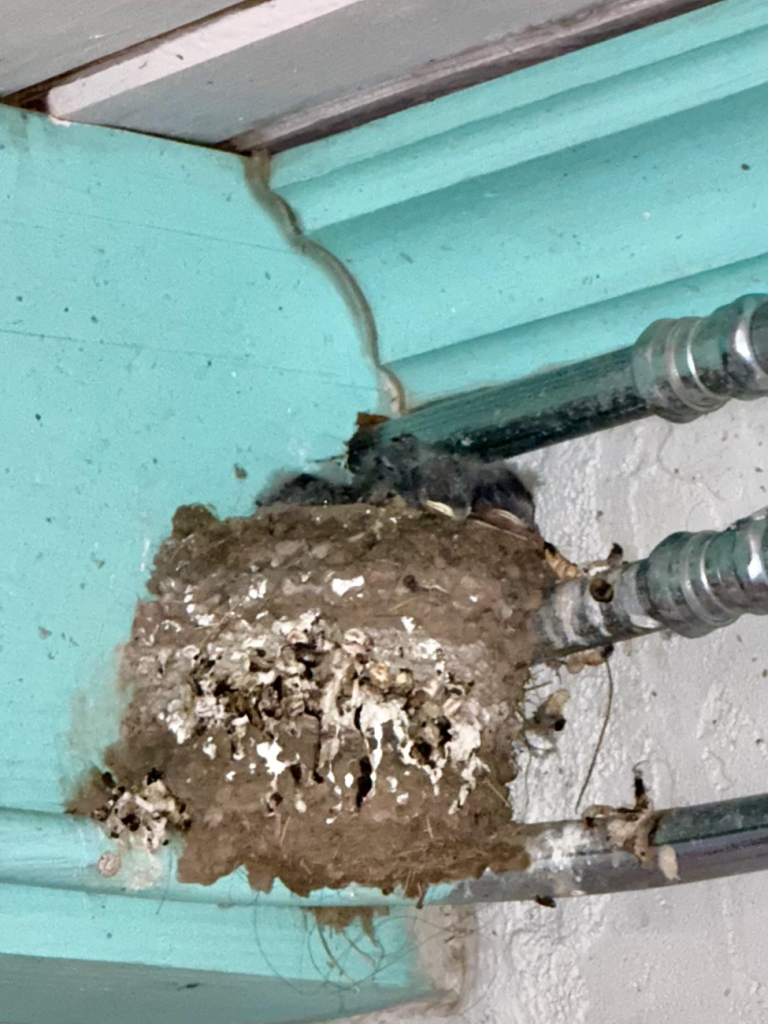
Since we are never in one place for very long, we don’t have much opportunity to spend time really learning the bird species and plant life, so we rely heavily on helpful apps to guide us in identifying species and finding resources for more information. Apps like Merlin Bird ID and iNaturalist are our main tools when exploring a new place. Sometimes I’ll be recording audio on Merlin to identify singing birds while my wife takes photos of plants on iNaturalist, and this helps us quickly identify what we’re looking at so we can learn as much as we can about it. These are great tools for beginners like us, because we can take a picture of a bird or plant that’s not familiar to us, and it will use the location and time of year to narrow down possible matches. In the apps, there’s often also more pictures at different angles we can use to compare and confirm a species.
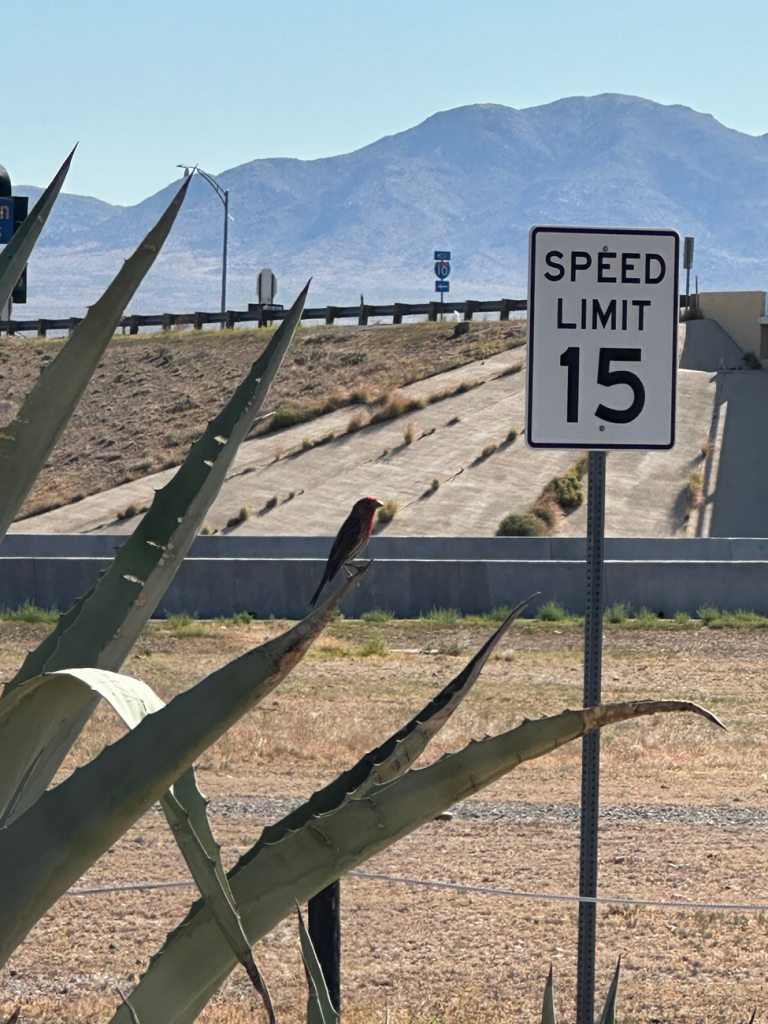
We’ve also noticed some interesting behaviors around places like truck stops and large warehouses we deliver at. Throughout the day, while driving, our grill and windshield will get caked with bugs we hit. Once we park birds will land on our truck and go around picking the bugs straight out of the oven that is our grill. They don’t leave my truck spotless by any means, but they do a good job cleaning up ahead of me. This abundance of food for insect eaters means that truck stops are hotbeds for these birds and sometimes can make them look like an Alfred Hitchcock movie (The Birds 1963).
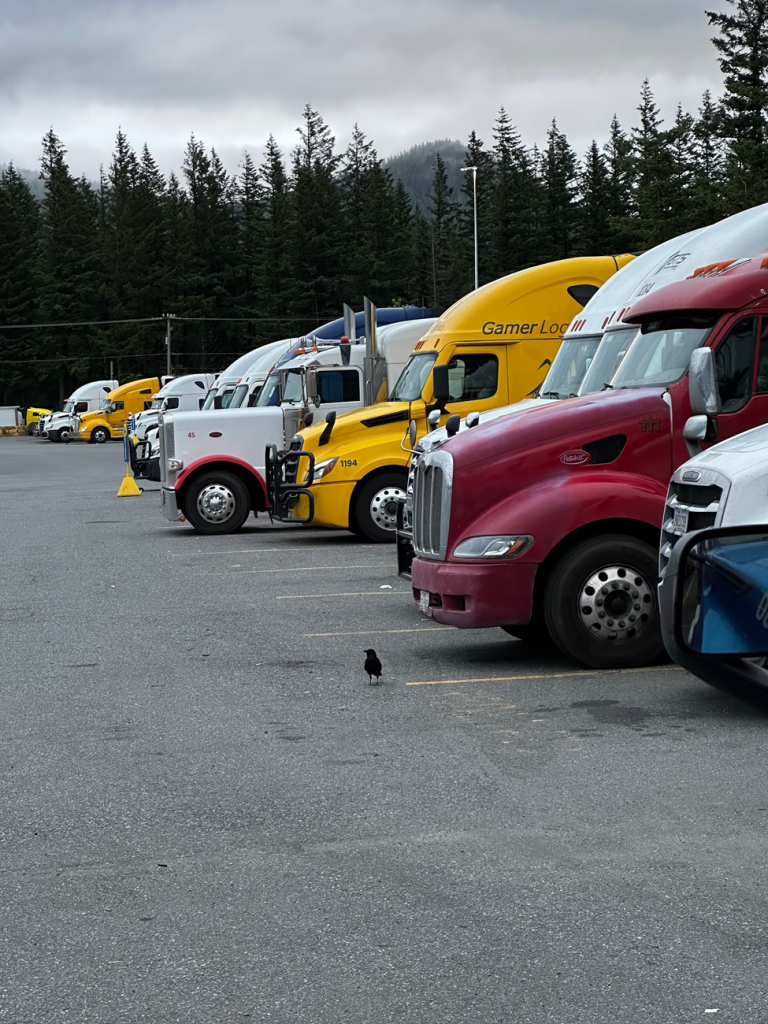
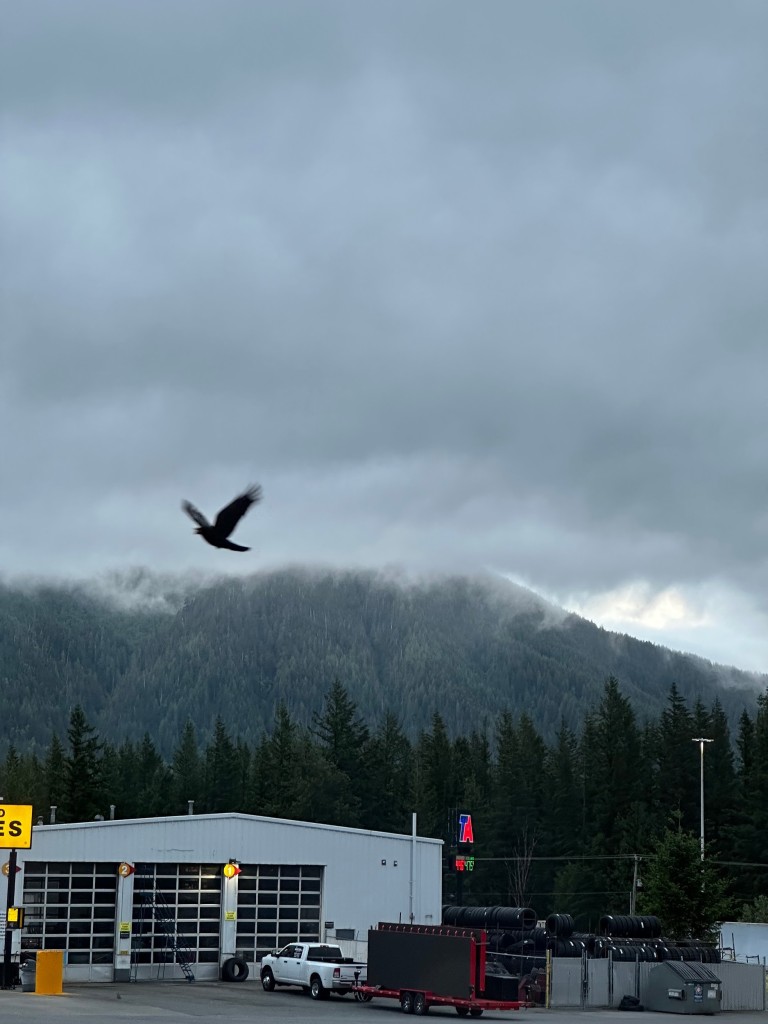
Crowds also tend to change from region to region, and we noticed everywhere has their own “common black bird”. From Grackles in the east, Ravens in the southwest, Magpies up the Pacific coast, to Red-winged Blackbirds in the Midwest. It’s interesting to see what bird might be noteworthy in one state, but a “whatever it’s just a….” bird in the next. This change in crowd can also give us clues to other nearby environments. For instance, on one occasion in Wisconsin, Brenda noticed a lot of gulls flying around the truck stop we were parked at. We thought this to be odd at the time because we hadn’t seen any nearby bodies of water. We opened Google Maps and zoomed out, and sure enough we noticed there was a small lake only a few miles away that we decided was worth looking into. We let the birds guide us to discover more about where we were, and it led us on a beautiful little adventure!

Another frequent notable sight is the amount of birds on the side of the roads. We found ourselves wondering why birds risk so much being so close to the hazardous roads. For some, the motive was clear—roadkill. Vultures and ravens were often spotted at the scene of the crime, crowding around carcasses and cleaning up the meat left behind. But for others the answer wasn’t as big and obvious. They were simply there for easy meals; not all the bugs that cars and trucks hit stay on the vehicle. Wind and speed usually fling the dead bugs off and provide sustenance for the hungry birds, and they have it all down! We eventually also learned that the sides of roads provide strips of native prairies that cut through large sections of agricultural lands. These narrow strips house insects and plant life that provide food for other species. Wrens, Sparrows, and Pipits zip up and down highways living and feeding in these strips. Because of this, they are constantly playing chicken every time they take flight. Even if they’re nimble enough to avoid becoming the vultures next cleaning job, they still aren’t safe. The road signs the Department of Transportation uses to communicate directions to drivers loom high over the road, making them perfect posts for raptors to hunt from. Hawks will perch on these signs or light posts and hunt on the roadways. We’ve been lucky enough to catch more than one hawk swooping down on a less fortunate bird or mouse as we’re driving down the road.
We enjoy having the opportunity to see so much of the country and take every chance we get to learn more about local wildlife and plants, and we do what we can to be better stewards for all the places we visit. Using a mix of modern apps and traditional observation methods, our time in the outdoors always provides us with fulfilling and meaningful educational moments that help us get a better grasp on all the incredible nature the open road holds.

